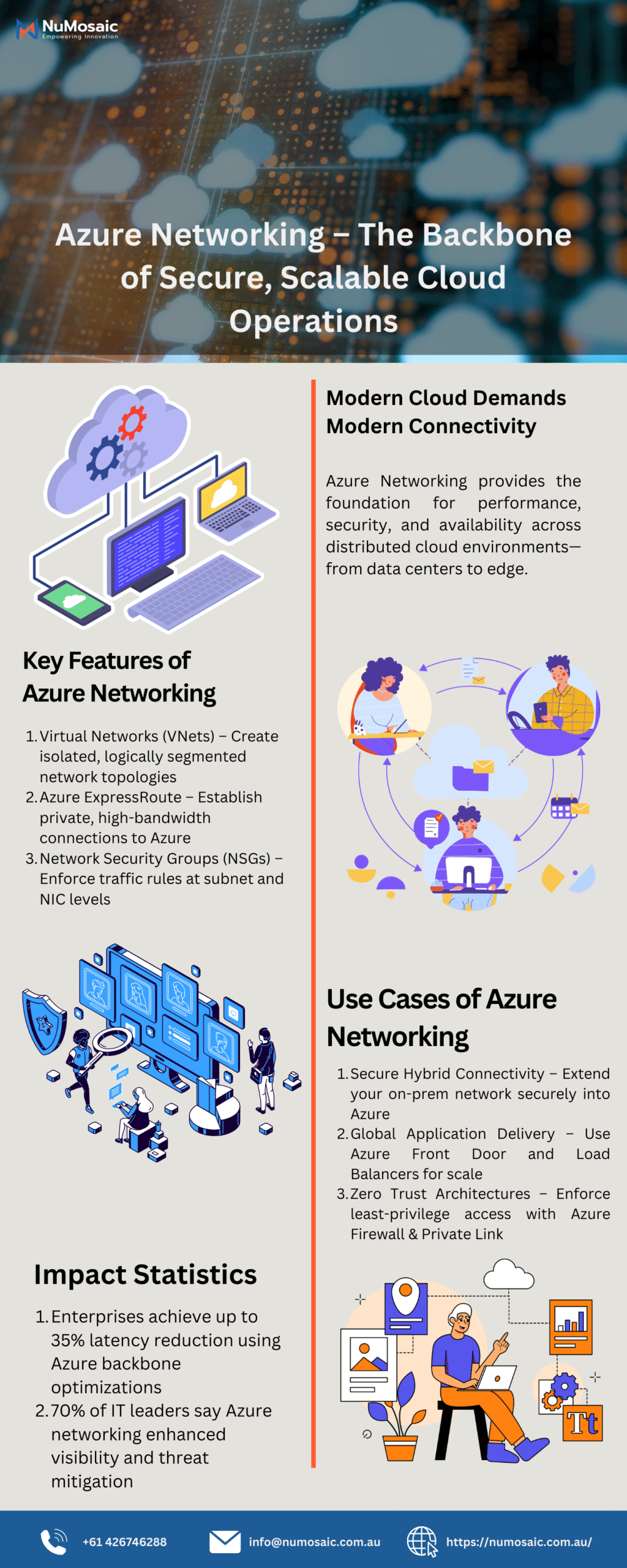What Is Azure Networking?
Azure Networking is a suite of cloud-based services and tools that enable organizations to build, manage, and secure connectivity across their infrastructure—from virtual networks to global applications. It powers everything from internal workloads to public-facing apps, ensuring that data moves efficiently, reliably, and securely.
🧠 Think of it as the circulatory system of your Azure environment—keeping traffic flowing where it needs to go, fast and protected.
Key Components of Azure Networking
| Service | Description |
|---|---|
| Azure Virtual Network (VNet) | Create isolated, private network environments. |
| Azure Load Balancer | Distribute traffic for high availability. |
| Azure Application Gateway | Layer 7 load balancing with web app firewall (WAF). |
| Azure VPN Gateway | Secure connections between on-prem and Azure. |
| Azure ExpressRoute | Private, dedicated connections to Azure. |
| Azure Firewall & NSGs | Enforce network-level security and segmentation. |
| Azure Front Door | Global content delivery, performance, and DDoS protection. |
Why Azure Networking Matters
Modern applications require:
🌍 Global Reach – Connect users across regions.
🔐 Security – Protect data in transit and at rest.
⚡ Performance – Low-latency experiences, no matter the scale.
🛡️ Resilience – Auto-failover and load balancing to stay online.
🔄 Hybrid Connectivity – Seamless integration between cloud and on-premises.
Azure Networking delivers all of this—by design.
Benefits of Azure Networking Architecture
| Benefit | What It Enables |
|---|---|
| High Availability | Keep services running 24/7 with redundant paths. |
| Global Scalability | Reach users wherever they are with global PoPs. |
| End-to-End Security | Encrypt traffic and enforce granular access. |
| Hybrid Integration | Extend your data center into Azure securely. |
| Cost Optimization | Route traffic efficiently, avoid data egress costs. |
Common Use Cases
Multi-tier web apps using VNets, NSGs, and Load Balancers.
Global SaaS platforms leveraging Front Door for performance and WAF protection.
Secure hybrid architectures with ExpressRoute or VPN Gateway.
IoT or edge workloads where latency and reliability are critical.
💡 Related Read: [Azure Infrastructure as Code – Automate, Standardize, Scale] (← insert internal link)
Best Practices for Azure Networking
🧱 Segment networks with subnets and NSGs for security.
🕵️♂️ Monitor and log traffic using Network Watcher.
🔄 Use private endpoints to access services securely.
🛡️ Enable DDoS Protection for mission-critical workloads.
🔁 Design with redundancy using Availability Zones and global routing.
Secure, Scalable, and Ready for Growth
Whether you’re building internal applications, customer-facing platforms, or hybrid systems, Azure Networking is the invisible backbone that keeps everything running smoothly—securely and at scale.
👉 Dive deeper in our [Cloud Architecture Essentials Guide]. Click Here

